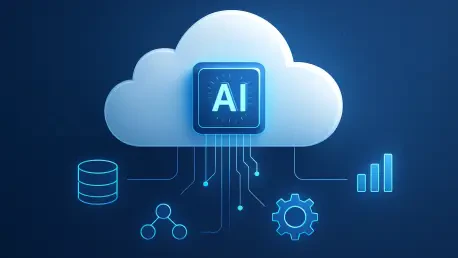In a remarkable display of technological prowess, Google’s strategic focus on artificial intelligence has catapulted its cloud computing division to an unprecedented $10.3 billion in revenue during the second quarter of this year. This achievement underscores a pivotal shift in how the tech giant approaches AI, transforming it from a mere competitive safeguard into a powerful engine of financial growth. By weaving AI seamlessly into its cloud services, search engine capabilities, and enterprise solutions, Google is not only redefining its business model but also cementing its position as a frontrunner in the tech industry’s AI-driven landscape. This surge in revenue highlights a broader trend where innovation meets profitability, setting a new benchmark for how technology can reshape market dynamics. As the industry watches closely, Google’s ability to monetize AI across diverse platforms offers a glimpse into the future of digital transformation.
Cloud Computing as an AI Powerhouse
Google Cloud has emerged as a cornerstone of the company’s AI strategy, with platforms like Vertex AI enabling businesses to craft custom AI models through a usage-based pricing structure. This model, which charges based on tokens processed, mirrors the flexibility of software-as-a-service offerings and has fueled a staggering 29% year-over-year revenue increase. Beyond immediate financial gains, a backlog of committed deals worth $106 billion signals sustained growth for the division. This consumption-based approach ensures that businesses only pay for what they use, fostering adoption across various sectors while securing steady income for Google. Additionally, the integration of Tensor Processing Units (TPUs) into cloud infrastructure reduces operational costs for users, making the platform an attractive choice for enterprises scaling their AI capabilities. This strategic bundling of hardware and AI tools illustrates a forward-thinking approach to profitability.
Equally significant is the massive capital expenditure of $85 billion directed toward data center expansions to support this growth. Such investments are not merely about scaling infrastructure but about preparing for the escalating demand for AI-driven cloud solutions. This financial commitment reflects confidence in the long-term potential of AI to drive cloud adoption among enterprises worldwide. Unlike short-term pilots that once dominated the landscape, Google Cloud is transitioning to sustainable profit models by embedding AI capabilities into its core offerings. The focus on recurring revenue through metered access ensures that the platform remains a vital resource for businesses navigating digital transformation. As non-tech industries increasingly turn to cloud-based AI for operational efficiency, Google’s infrastructure investments position it to capture a significant share of this expanding market, reinforcing its leadership in the sector.
AI Innovations in Search and Advertising
A key pillar of Google’s AI monetization strategy lies in its search engine enhancements, particularly through AI Overviews that integrate advertisements within generated summaries. This innovative approach maintains click-through rates for advertisers while expanding global reach, with AI Mode now accessible in over 180 countries. By blending ads seamlessly into AI-driven content, Google preserves its dominance in the search arena, ensuring that advertisers continue to see value in the platform. Financial analysts have noted this as a critical factor in sustaining market leadership, especially as user expectations for instant, relevant information grow. The ability to balance user experience with revenue generation through these summaries showcases a nuanced understanding of digital advertising in an AI era.
Beyond search, AI-powered targeting has propelled YouTube’s ad revenue to $9.8 billion in the second quarter, marking a 13% increase from the previous year. Leveraging multimodal AI capabilities that process text, images, and video, Google enhances advertising precision across its ecosystem, delivering tailored content to users. This precision not only boosts advertiser satisfaction but also drives higher engagement rates on platforms like YouTube. Unlike traditional ad models, this AI-driven approach adapts to user behavior in real-time, creating a dynamic advertising environment. As competition in digital advertising intensifies, Google’s ability to refine targeting through AI ensures it remains ahead of the curve, capturing a larger share of ad spend. This dual focus on search and video platforms underlines a comprehensive strategy to maximize AI’s impact on revenue streams.
Enterprise Solutions and Emerging Challenges
Google’s push into enterprise solutions with AI agents represents a bold move to capture non-tech sectors such as finance and healthcare. These autonomous software tools, designed for complex workflows, are sold directly to businesses with pricing based on data volume and consumption. Bypassing traditional IT departments, this direct-to-business model has seen growing adoption, as highlighted by industry leaders. Premium subscription tiers, including a $249 monthly plan for advanced search and blockchain tools, further bolster direct revenue while providing valuable data to refine AI models. This dual benefit of income and data underscores a strategic approach to enterprise engagement, positioning Google as a trusted partner in digital innovation across diverse industries.
However, challenges accompany this rapid expansion, particularly with publishers voicing concerns over declining organic traffic due to aggressive ad integrations in AI search. If not carefully balanced, this could risk alienating users who prioritize content over commercials. Regulatory hurdles, including antitrust actions mandating data sharing, add another layer of complexity to the landscape. Despite these obstacles, Google’s vast scale offers a buffer to navigate such issues effectively. Internally, the shift toward agentic AI—systems that operate independently—signals preparation for future opportunities in fields like robotics and quantum computing. While these challenges pose risks, the company’s proactive stance in addressing them through innovation and strategic planning suggests resilience in maintaining its upward trajectory.
Future Horizons in AI Monetization
Looking ahead, Google’s commitment to multimodal AI and substantial infrastructure investments points to a robust long-term strategy for sustained growth. Analysts estimate a strong likelihood of the company leading in AI model development by the end of this year, a projection mirrored in its stock’s forward price-to-earnings ratio. This optimism stems from Google’s ability to transform AI from a cost center into a profit engine, redefining tech economics in a post-keyword era. By focusing on actionable solutions and ad integrations, the company is not just innovating but reshaping how technology drives revenue. This forward-looking approach positions Google to capitalize on emerging trends, ensuring it remains at the forefront of the industry.
Reflecting on the strides made, Google’s journey in the second quarter showcased how AI could redefine financial success in technology. The $10.3 billion revenue milestone for Google Cloud, coupled with significant ad revenue growth and enterprise adoption, highlighted the effectiveness of consumption-based models and bundled offerings. As the industry evolved, the emphasis on multimodal AI and agentic systems hinted at trillion-dollar opportunities in the years ahead. For businesses and investors, the takeaway was clear: staying attuned to Google’s innovations offered a roadmap for navigating the future. Exploring partnerships or leveraging cloud-based AI solutions emerged as practical steps to align with this transformative wave, ensuring relevance in a rapidly changing digital landscape.









